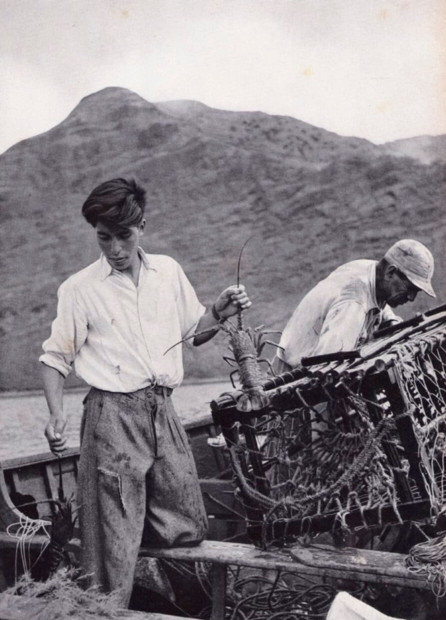LOBSTER FISHING
JUAN FERNÁNDEZ, AN EXAMPLE
The fishing of the endemic Juan Fernández lobster is the main source of income for the local economy, and the population of this species has remained stable and abundant since the start of its commercial exploitation in 1893. The history of lobster fishing is a source of local pride.
Most of the world's island communities have overexploited their marine resources, affecting the fish population, with increasingly scarce and smaller catches. But more than 100 years ago, the fishermen of the Juan Fernández archipelago became aware that they had to follow a different path towards sustainability. They were the ones who self-imposed early management measures for the lobster and asked the governments to formally regulate the activity from 1894, establishing extraction limits and closed seasons for their reproduction. This has allowed this fishery to subsist for more than 100 years and keep the marine ecosystem practically intact, even though they have been using it for more than a century. Something very difficult to find in other parts of the world.
The extracted lobster is mainly exported to China and work is currently underway to expand its marketing to other global markets.
The fishing season is closed for four months a year, between June and September, to allow the recovery of the species. Only the use of the lobster trap for the extraction of the crustacean is allowed, there are size restrictions for its capture, which cannot be less than 11.5cm in length of the cephalothorax, and the total prohibition of removing females with eggs from the sea. Each fisherman has a designated and registered catch location, called a “marca”.
This fishery was the first in Chile to achieve the highest sustainability certification standard.
Additionally, the community of Juan Fernández together with the Chilean government have promoted the creation of one of the largest marine protected areas in the world. With the exception of artisanal fishing close to the coasts of the archipelago, fishing is prohibited in this area of more than 600 thousand km². This is an important achievement not only for Chile, but also for the oceans and humanity.
The Lobster trap, an artisanal method
The current technique for lobster fishing, known as the lobster trap, consists of an artisanal method implemented in the 1940s, which uses a rectangular cage built with maqui or eucalyptus wood rods, both introduced invasive species, divided into two sections, inside which a funnel-shaped tissue known as buche is inserted, allowing for the entry but not the exit of the lobster. Bait is placed inside the trap to attract the lobster. The main types of bait are fish such as pandora, moray eel and horse mackerel.
Fishery
Although lobster fishing is the main fishery in Juan Fernández, it is not the only one. The rich marine ecosystems of the archipelago are a refuge for many species of invertebrates and fish, many of them endemic. Among the most significant of a smaller scale, either for direct consumption or sale, we find golden crab, glassfish, also known as palometa, sole, Juan Fernández cod, pandora, Juan Fernández horse mackerel and octopus.
A FISHING MODEL THAT GUARANTEES THE SUSTAINABILITY
OF THEIR RESOURCES, RESPECTING THE MUTUAL RELATIONSHIP
AND BALANCE BETWEEN SPECIES

History of our fishing
FIRST RECORDS
Since its discovery in 1574, the island has been sporadically occupied by sailors and pirates, and visited for scientific, tourist and commercial purposes. The common denominator in the records and chronicles of those trips is the allusion to the abundant fishing and the exquisite lobsters that were easily extracted from the coast.
BEGINNING OF COMMERCIAL ACTIVITY
FISHERMEN COOPERATIVES
In the 1960s, after years of abuse and exploitation, the local fishermen decided to become independent and to put an end to the employer/employee system, which had kept them in precarious economic conditions and subjected to the circle of the grocery store. This is how they built their first boats and established the Juan Fernández Fishermen Cooperative in 1967.
PROMOTERS OF CONSERVATION
During the last century, the fishermen of Juan Fernández have played an active role in the protection of resources and marine conservation. The regulations that have been in force in local artisanal fishing since 1907, such as the minimum size and closed season, were incorporated into the Fisheries Law, and today it is the fishermen themselves who, under a model of self-management, ensure the compliance with these regulations, and for the exclusive use of artisanal fishing techniques. Likewise, they have been promoters of the creation of the Multiple-Use Marine Coastal Protected Areas and the Marine Parks.
“Respect for nature, added to the wisdom of elders, have been fundamental in the sustainability of both fishing and our community.”


